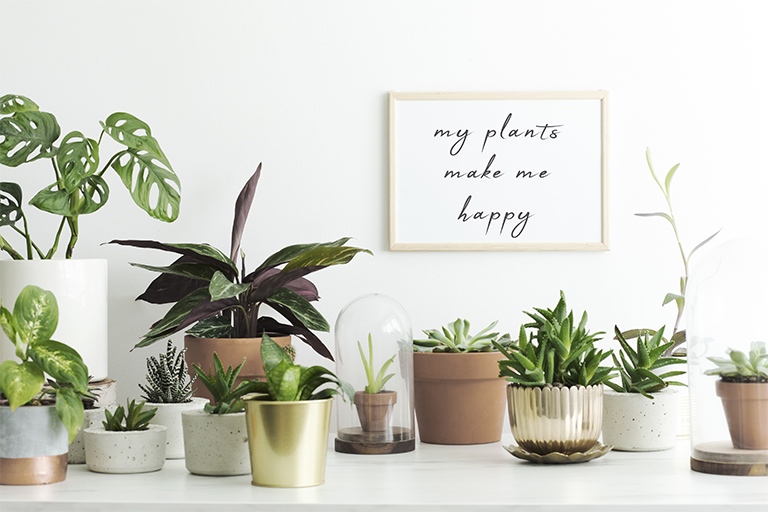By Vicki Spencer, Master Gardener
You may be asking yourself, “What is a succulent?” Just as you imagine a succulent steak to be juicy, you can think of succulent plants as those that store water in their leaves and/or stems. Sometimes succulent plants are confused with cacti. However, while all cacti are succulents, not all succulents are cacti. Like cacti, succulents prefer bright light and have the ability to tolerate lengthy periods of drought. What makes succulents interesting house plants is that they come in many shapes, sizes and colors. On a recent pilgrimage to my local nursery, I was amazed by the variety of succulents now available to customers.
One of my favorites is the snake plant (Sansevieria trifasciata), which got its name because its long patterned leaves resemble a snake. It needs little care and doesn’t need to be repotted for years, even when it seems to be getting overcrowded. However, occasional pruning and fertilizer will add to its beauty.
Other succulent varieties include Stonecrop (Sedum), which beautifully trails over the edge of containers; Aeonium with its fleshy, long-leaved rosettes in colors ranging from bright green to purple; crown of thorns (Euphorbia milii) with its long, spoon-shaped leaves at the ends of spiky branches and clusters of tiny flowers; and burro’s tail (Sedum morganianum) with its gray-green or gray-blue leaves, which grow up to 3 feet long and make it perfect for a hanging container.
Not all succulents have juicy leaves. For instance, the ponytail palm (Beaucarnea recurvata), which isn’t actually a palm, doesn’t even look like a succulent. Its long, thin leaves have little surface to lose moisture and it stores water in the base of the trunk, so it doesn’t need to be watered often. Although it is slow growing, I rescued mine from a container plant my mother received as a gift and was about to throw out when it seemed to be dying, and it has doubled in size just a few years later. I think repotting has helped and with annual applications of fertilizer, I am hoping it will grow to its expected height of 12 feet or more.
If your succulent receives too much light, it may stretch upward and its leaves may become sparse. One solution is to replace sunlight with a grow light. Better yet, you can cut off the top (being sure to leave some stem with leaves) and propagate it in potting soil.
In addition to being visually fascinating, succulents are fairly easy to grow inside Colorado homes, which tend to be especially dry during the winter. Even though the plants prefer direct light, they adapt well to low light. Perhaps the greatest problem people have with succulents is overwatering. Succulents prefer well-drained soil and should only be watered after the soil dries out. While they may need watering once a week during spring growing season, during their dormant period in the winter, they may only need watering once a month.
Succulents are the perfect solution for co-op members who want to escape cold winters in Colorado. Most can be left untended for a couple weeks and will be happy to greet you when you return home.
Gardener Vicki Spencer has an eclectic background in conservation, water, natural resources and more.

